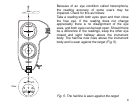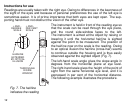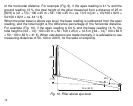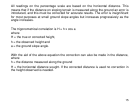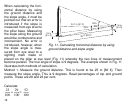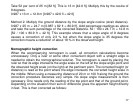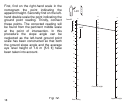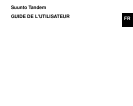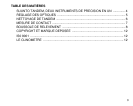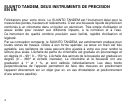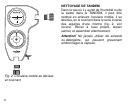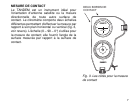17
Take 52 per cent of 25 m [82 ft]. This is 13 m [42.6 ft]. Multiply this by the cosine of
9 degrees.
0.987 x 13 m = 12.8 m [0.987 x 42.6 fl = 42 ft]
Method 2. Multiply the ground distance by the slope angle cosine (strait distance).
0.987 x 25 m = 24.7 m [0.987 x 82 ft = 80.9 ft]. Add percentage readings as above
and take the sum percentage of the corrected distance. 52 / 100 x 24.7 m = 12.8 m
[52 / 100 x 80.9 ft = 42 ft]. This example shows that a slope angle of 9 degrees
causes a correction of only 2.3 % but when the slope angle is 35 degrees the
correction means a reduction of about 18 % in the observed height.
Nomographic height correction
When the accompanying nomogram is used, all correction calculations become
unnecessary. Only a ruler or some other convenient object with a straight edge is
needed to obtain the nomographical solution. The nomogram is used by placing the
ruler so that its edge intersects the angle scale on the left at the slope angle point and
the observed height scale (on the right) at the pertinent point. The corrected height (or
distance) is read at the point where the edge intersects the corrected height scale in
the middle. When using a measuring distance of 20 m or 100 ft along the ground the
correction procedure becomes very simple. No slope angle measurement is then
necessary. One needs only the reading of the top point and that of the ground point.
Depending on the situation their sum or difference gives the apparent height directly
in feet. This is then corrected as follows:



